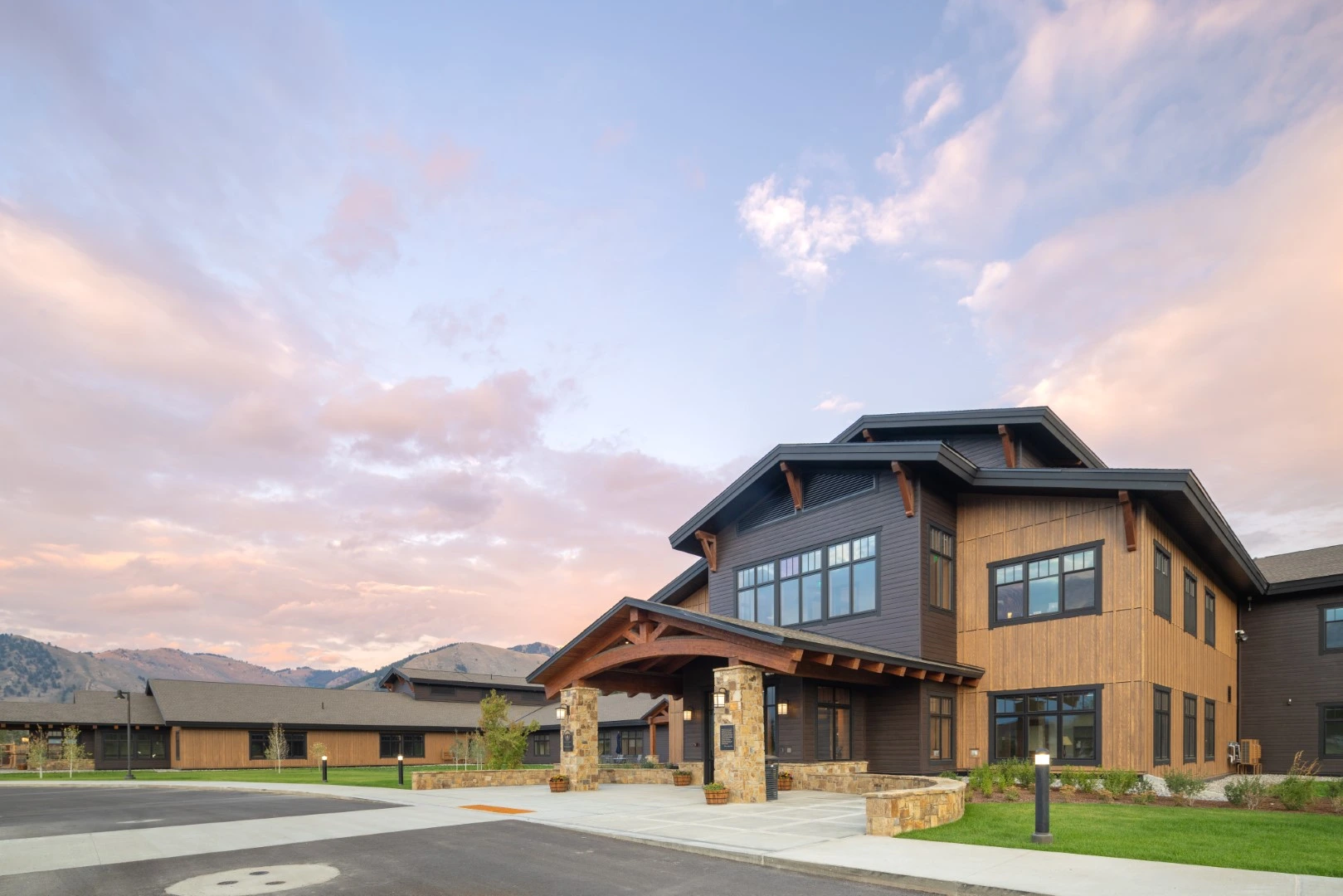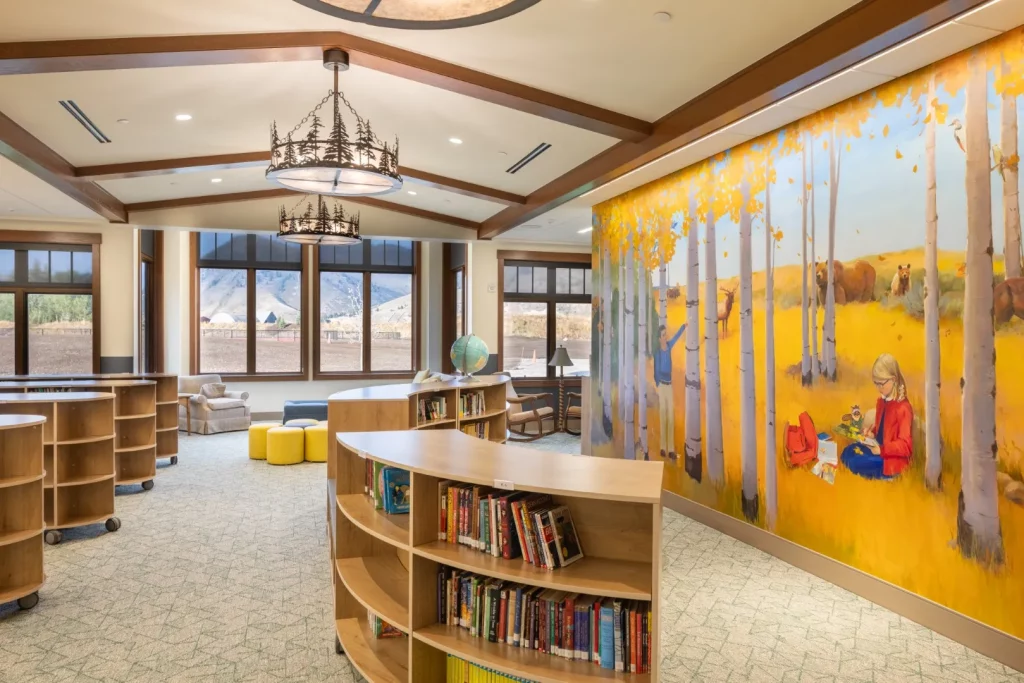
Successfully executing a large-scale construction project in Jackson Hole demands a dual focus: robust structural engineering and the creation of a high-performance thermal envelope. The region’s extreme weather, challenging terrain, and some of the country’s most rigorous building codes necessitate a specialized approach. At the heart of any successful project here is meticulous planning that integrates construction with a sophisticated insulation strategy from day one.
This guide explores the essential considerations for managing a major construction and insulation project in this unique alpine environment, based on our direct experience. From initial groundwork to final inspection, and even post-construction enhancements, we provide a clear view of what’s required to build structures that are not only compliant but exceptionally durable and efficient.
Building in Jackson Hole presents a unique set of challenges. The high-altitude climate and a community dedicated to preservation create a regulatory and physical environment that demands deep local knowledge of both construction and building science.
The most significant factor is the weather. A short building season, often limited to five or six months, dictates a project’s entire timeline. Heavy snowfall can begin as early as October, making it crucial to have the structure fully enclosed before the first major storm. This “weathering-in” process involves more than just roofing and siding; it means creating an airtight and well-insulated shell. The often rocky and sloped terrain also requires specialized excavation and foundation techniques to ensure long-term stability.
Teton County’s detailed building codes are designed to protect the area’s natural beauty and ensure structures can withstand its harsh conditions. As outlined by the Teton County, WY Planning & Building Services, regulations cover everything from structural engineering for immense snow loads to energy efficiency standards that mandate a well-insulated and sealed building envelope. According to experts at the Building Science Corporation, a key principle in cold climates is creating a “perfect” air and vapor barrier to prevent heat loss and moisture issues. Aesthetic guidelines also encourage the use of natural materials like wood and stone, which must be installed in a way that preserves the integrity of the insulation system.
Jackson Hole’s remote location creates logistical hurdles for all materials, including specialized insulation products. Proactive supply chain management is essential to prevent delays that can halt a project during the critical building window. Ordering materials well in advance and maintaining an organized on-site staging area can prevent costly budget overruns tied to material price volatility and transportation delays.
A solid plan requires seamless execution, combining careful scheduling with the right materials and a coordinated team that understands how the structure and its insulation systems work together.
As highlighted in our recent press release, this achievement underscores our dedication to pushing construction and insulation standards even higher across Jackson Hole and beyond.
Projects are broken down into distinct phases to manage the short building season. The primary goal is to get the building “weathered-in” before winter, which allows interior work to continue through the colder months. A well-executed insulation plan is critical to this strategy, enabling trades to work in a conditioned space.
We’re proud that our work on this major project was recognized in a press release, reflecting our continued pursuit of precision, innovation, and excellence in every phase of construction.
| Phase | Key Activities | Target Timeline | Climate Consideration |
|---|---|---|---|
| Phase 1: Sitework & Foundation | Excavation, utility trenching, pouring concrete foundations and slabs. | May – June | Must be completed after the ground thaws and before frequent summer thunderstorms. |
| Phase 2: Framing & Dry-In | Structural framing, sheathing, roofing, window/door installation, and applying exterior insulation and air barriers. | July – September | This is the top priority. The goal is a weather-tight, insulated shell before the first snowfall. |
| Phase 3: Exterior Finishes | Siding, stonework, decks, and exterior painting/staining. | August – October | Completed as the structure becomes secure, but must stop when temperatures drop to ensure proper material curing. |
| Phase 4: Interior Work & Insulation | Spray foam, blow-in insulation, MEP (mechanical, electrical, plumbing), drywall, and interior finishes. | October – April | Can continue through winter once the building is fully enclosed and heated. |

In a place with severe temperature swings, material choice is dictated by performance and durability. Creating a highly efficient thermal envelope is critical for managing heating costs and ensuring occupant comfort.
These principles were recently applied during a complex project at a local school, which ran intermittently from May 2024 to August 2025. We provided comprehensive insulation solutions, including spray foam for the roof, walls, and ceiling, blow-in insulation for the ceiling, interior sound insulation, and intumescent coatings throughout the building. Working in close cooperation with the teams at GE Johnson and DPR Construction, we diligently addressed the project’s varied and complex building envelope challenges, demonstrating our ability to integrate specialized insulation services into large-scale construction and even perform retrofitting after initial construction.
Building in Jackson Hole is a complex undertaking, but it is entirely manageable with the right expertise in both construction and building science. Success rests on a deep respect for the environment, a thorough understanding of local codes, and a project plan that seamlessly integrates the building’s structure with its thermal envelope.
For questions about a specific project or to discuss the unique challenges of building and insulating in Jackson Hole, WY, or nearby areas, feel free to reach out. You can contact High Country Solutions by phone at (307) 248-9063 or by email at [email protected] for a consultation.
The condensed timeline means labor and equipment must be used with maximum efficiency. Labor costs can be higher due to demand. Any project extending beyond one season will incur costs for winterizing the site and remobilizing in the spring.
Requirements include stronger roof trusses, reinforced wall framing, and foundations engineered to support the immense weight of the structure plus potential snow load. As the Spray Polyurethane Foam Alliance (SPFA) highlights, closed-cell spray foam can add significant structural strength and rigidity to a building assembly.
R-value measures an insulation’s resistance to heat flow. In an extreme climate like Jackson Hole’s, a higher R-value is crucial for energy efficiency, preventing heat loss in the winter and keeping the building cool in the summer. This leads to significant savings on energy bills and a more comfortable indoor environment.
Beyond weather, subsurface conditions are a major variable. Hitting bedrock or large boulders during excavation can lead to significant delays and budget increases.
Yes. Retrofitting older buildings with modern insulation is essential for improving energy efficiency and comfort. While it can present challenges like limited access, experienced professionals can effectively upgrade insulation in walls, attics, and crawl spaces, often with minimal disruption.
Regulations often require measures like wildlife-permeable fencing. Work hours may also be restricted during sensitive periods, such as elk migration seasons.